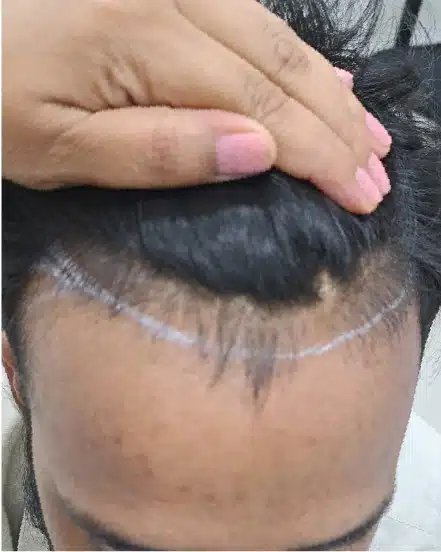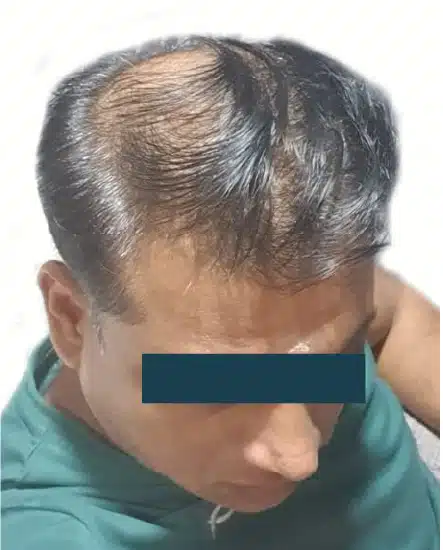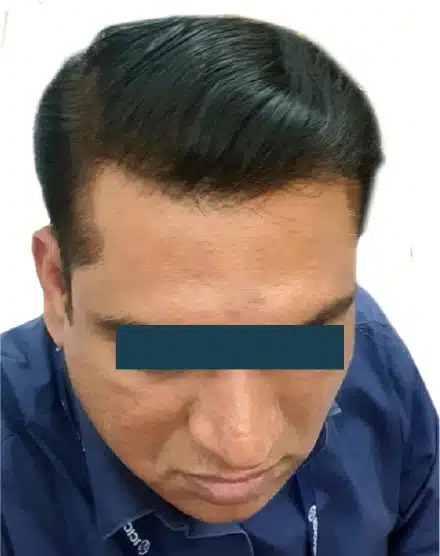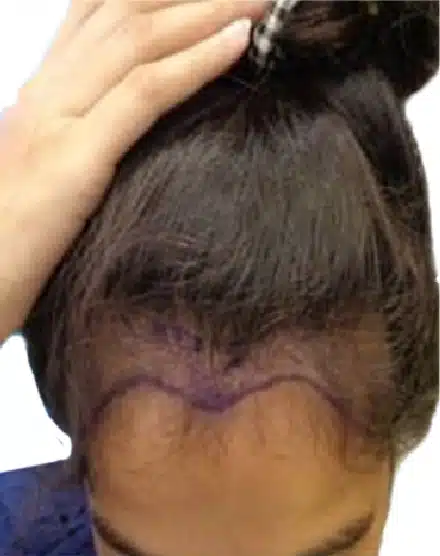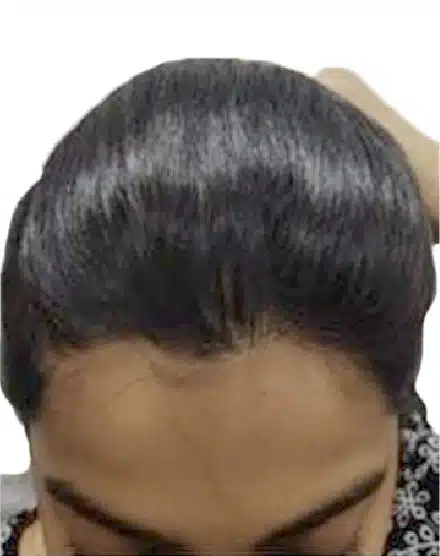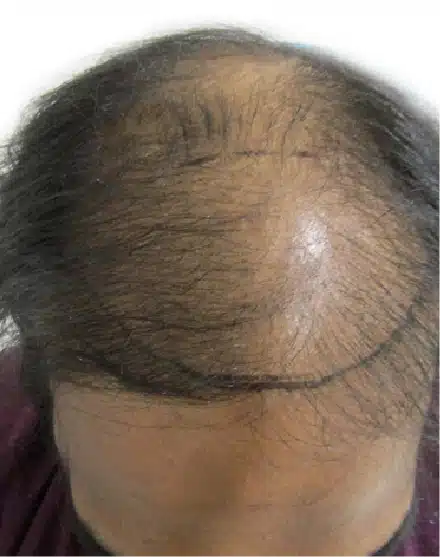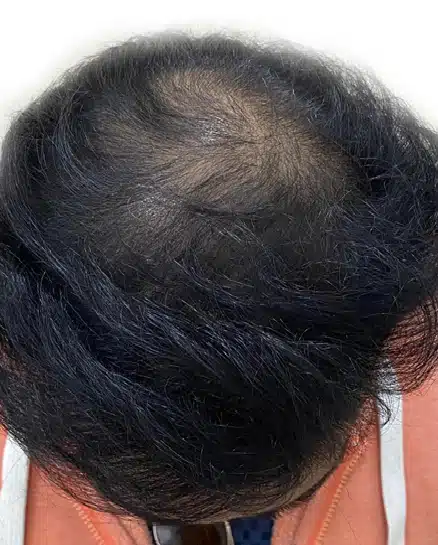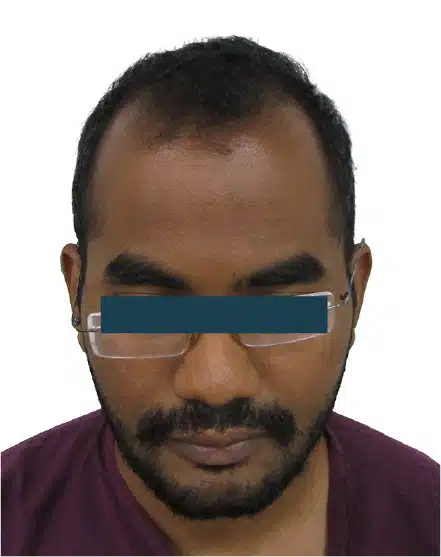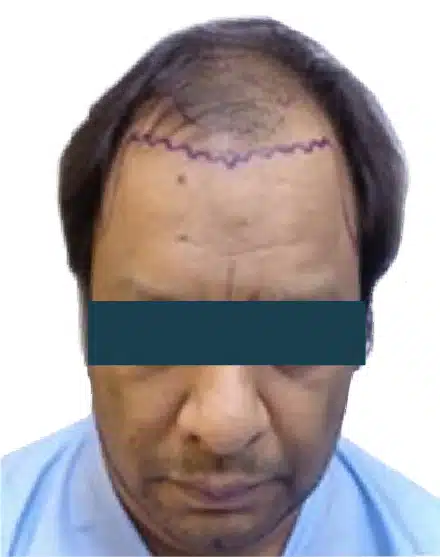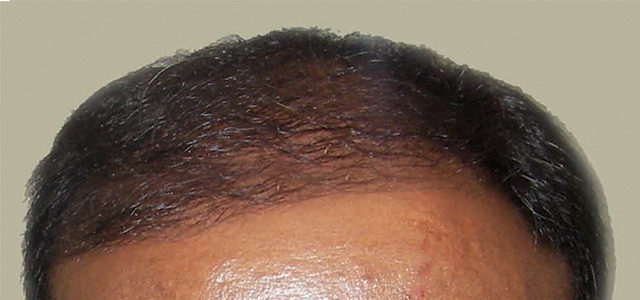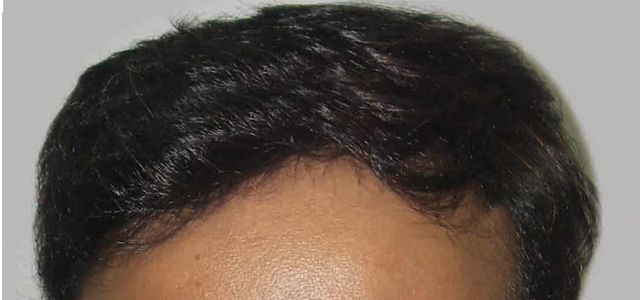In This Article
DHI vs FUE: Which Hair Transplant Is Better?
Hair transplants have become an effective solution for people dealing with baldness or extreme hair loss. With various hair transplant techniques available in the market, FUE (Follicular Unit Extraction) and DHI (Direct Hair Implantation) continue to remain the most popular options for their promising results. While both DHI and FUE are the most preferred hair transplant techniques, they differ in the procedure extracting, handling and implanting the hair follicles. If you are someone who is confused about which one is better – whether DHI or FUE, you are on the right page. In this article, we will handle the DHI vs FUE debate and provide the key differences between DHI and FUE to help you make an informed decision. Additionally, we will also learn why one should choose Oliva for a hair transplant procedure. Let us dive into the topic.
In This Article
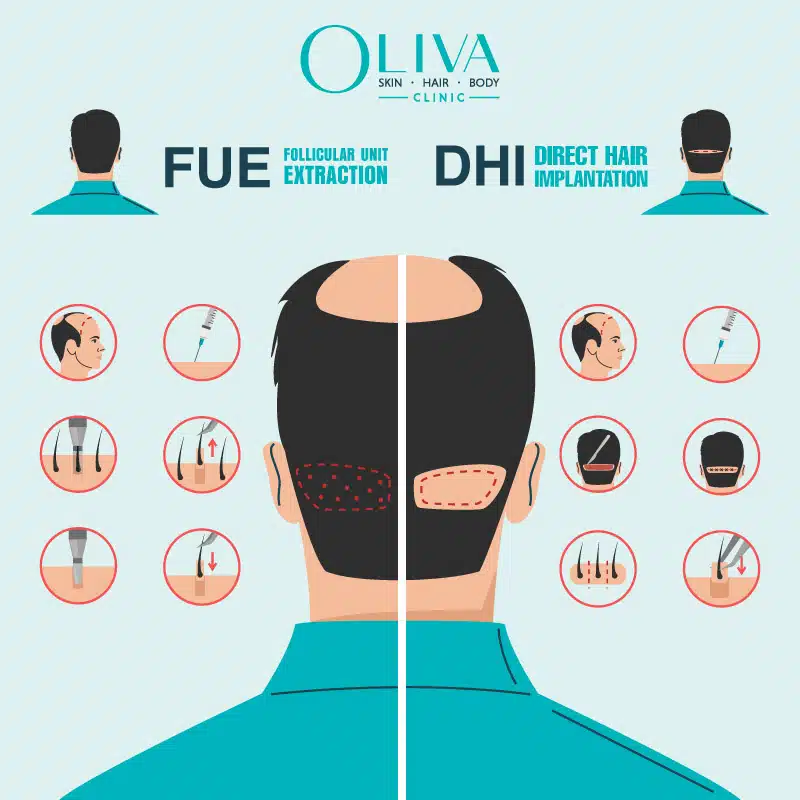
What Is FUE?
Follicular Unit Extraction (FUE) is an advanced hair transplant technique. In this minimally invasive procedure, the surgeon extracts follicular units or grafts from the donor area (usually the back of the scalp) and carefully implants them in the recipient area. These grafts contain 3-4 hair follicles, which are stored in a solution after harvesting. The surgeon will manually make tiny incisions in the scalp using a micro-punch tool and then insert the grafts into these incisions using forceps.
What Is DHI?
Direct Hair Implantation (DHI) is a hair transplant technique similar to FUE. In other words, it is an advanced version of the FUE method and is minimally invasive, too. In the DHI procedure, the surgeon extracts follicular units or grafts from the donor area (usually the back of the scalp) and immediately implants them in the recipient area. Unlike the FUE method, the surgeon uses a specialised implanter pen to extract hair follicles and immediately transplants them into the scalp by making tiny incisions. What makes DHI unique is the simultaneous extraction and transplantation of follicles. This allows precision by making the process more controlled and increasing the graft survival rate.
DHI vs FUE: Key Differences
Here is a side-by-side comparison of DHI and FUE hair transplant techniques that highlights the key differences:
| Parameter | DHI (Direct Hair Implantation) | FUE (Follicular Unit Extraction) |
| Graft Collection | The surgeon extracts hair follicles one by one using a specialised implanter pen. | The surgeon extracts hair follicles one by one using a micro punch tool. |
| Implantation Process | The surgeon implants the grafts directly in the balding areas of the scalp using an implanter pen immediately after extraction. They do not create prior incisions. | The surgeon implants the grafts manually after making tiny incisions in the recipient area. |
| Tools Used | Choi Implanter Pen | Micro punch tool for extraction, and forceps for implantation. |
| Incisions Required | Does not require creating prior incisions. | Tiny incisions are made before implantation. |
| Precision | Simultaneous extraction and implantation allows very high precision. The implanter pen helps in the precise control of the angle, depth, and direction of the follicles. | The precision is high since the surgeon does the implantation manually. It also depends on the surgeon’s skill during implantation. |
| Control Over Angle & Depth | The implanter pen provides complete control over the angle, depth, and placement of the hair follicles. | Less control over the angle and placement when compared to DHI. The surgeon manually adjusts it. |
| Hair Density | Enables denser placement of grafts and helps achieve high density. | Moderate density. This technique is best for larger areas. |
| Graft Survival Rate | Typically high, which is 90–95%. | 85–90% |
| Risk of Scarring | Minimal scarring. | Minimal dot-like scars. |
| Procedure Duration | Slightly longer than FUE due to its precision-based implantation. | The procedure time for FUE is comparatively shorter than DHI. |
| Recovery Time | Faster recovery time with minimal downtime. | FUE has a slightly longer recovery time than the DHI technique, which typically takes about a week. |
| Cost | DHI is a little more expensive than FUE due to advanced tools and precision. | FUE is relatively lower than DHI and more affordable. |
| Success Rate | Over 97% when performed by experienced surgeons | Around 90-95%, especially when performed by skilled surgeons |
Which Procedure Should You Choose?
In the DHI vs FUE debate, which one you should choose depends on your specific requirements. Moreover, the best person to determine if you need a DHI or FUE is a hair transplant specialist. A consultation with the doctor will help analyse your scalp condition, the degree of baldness, the number of grafts you may need and the best treatment that suits your unique needs. Reputed clinics like Oliva have expert surgeons who will help you choose the procedure best suited to your hair loss pattern that ensures natural-looking results.
Why Choose Oliva Clinic For Hair Transplant?
Oliva has earned a reputation as a trusted clinic for hair transplant procedures. Here are the top reasons why Oliva is the most preferred option for many:
1. Dermatologist-Led Expertise: Every hair transplant procedure at Oliva is performed by highly qualified and experienced surgeons to ensure safety, precision, and natural results.
2. Advanced DHI Techniques: At Oliva, we offer the most advanced and minimally invasive hair transplant method, DHI, which gives a natural-looking hairline, maximum density, minimal downtime, and long-lasting results.
3. Personalised Treatment Plans: Our experts at Oliva know that no two hairlines are the same. Hence, they design customised transplant plans tailored to an individual’s scalp condition, hair loss pattern, and their desired look.
4. USFDA-Approved Technology: At Oliva, we only use cutting-edge US FDA-approved equipment and tools, adhering to global safety standards to ensure high graft survival rates and minimal discomfort.
5. Hygienic & World-Class Clinics: All our clinics across the nation are equipped with state-of-the-art infrastructure. We follow strict hygiene and sterilisation protocols to provide a safe and comfortable experience.
6. Transparent Pricing: At Oliva, we believe in transparency. There are no hidden charges, only transparent costs of the treatments and realistic expectations.
7. Trusted by Thousands: Oliva has a strong track record of performing hair transplant procedures with 100% success rates. This makes Oliva one of India’s most trusted names in hair restoration.
Before & After Results Of Hair Transplant At Oliva Clinics
Check out the before-and-after pictures of our clients who had successful hair transplant procedures at Oliva. These images show the transformation achieved by our clients through natural hairline design and permanent hair growth, which blend seamlessly with their existing hair.
Takeaway
Both DHI and FUE are popular hair transplant techniques that offer promising results. However, which one is better or which procedure you should choose entirely depends on your specific needs. DHI provides precision and control, but costs more even for smaller areas. In comparison, FUE covers larger areas and is more cost-effective than DHI. The best person to determine whether you need a DHI or FUE is a specialist. Our experts at Oliva provide you with the most effective solution tailored to your specific needs and that delivers excellent results. What are you waiting for? Book your consultation with our expert surgeon today!
Read This Next
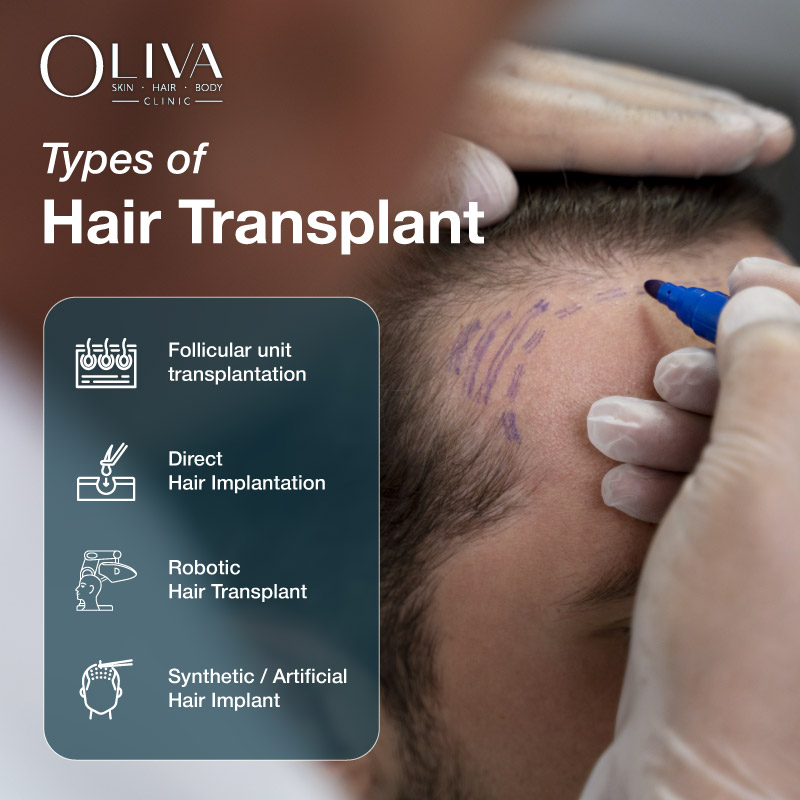
Types of Hair Transplant Techniques | FUE, DHI, FUT Explained
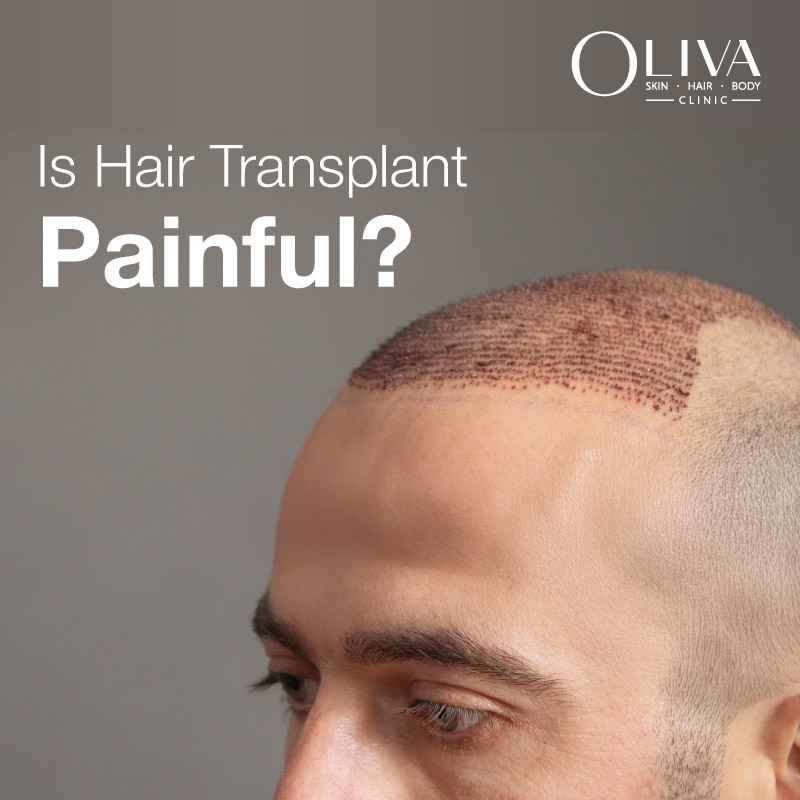
Is Hair Transplant Painful? Know The Truth About Discomfort & Recovery

Hair Transplant Cost In India – Price Starts At INR 35,000

Hair Transplant Cost In Chennai: Price Starts At INR 55
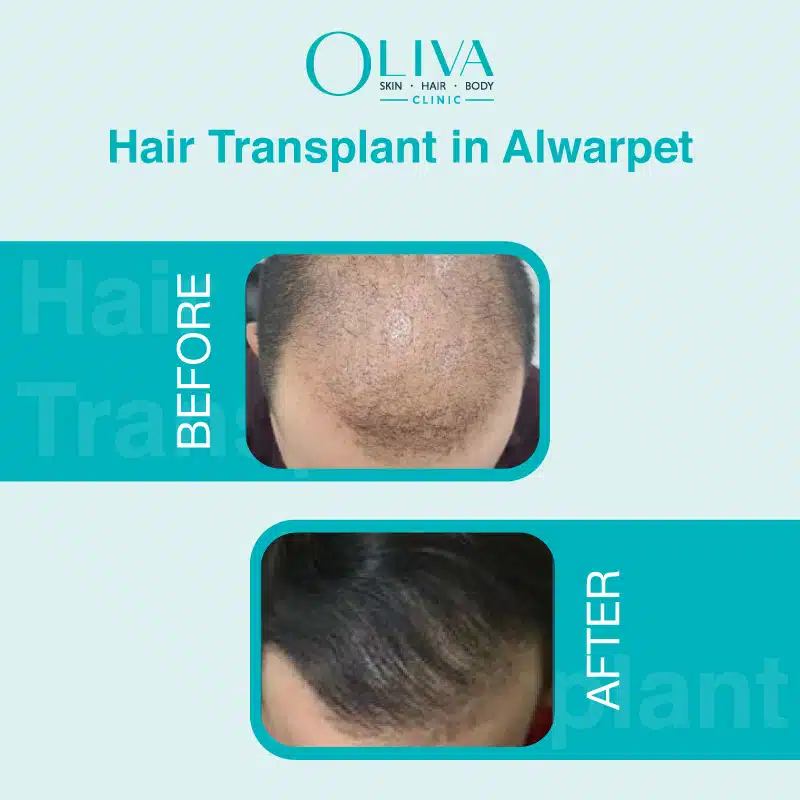
Best Hair Transplant in Alwarpet, Chennai | Safe, Effective & Surgeon-Led Procedure




